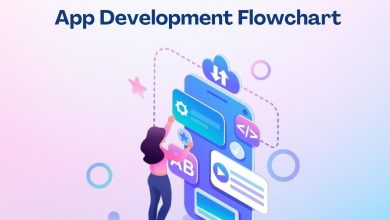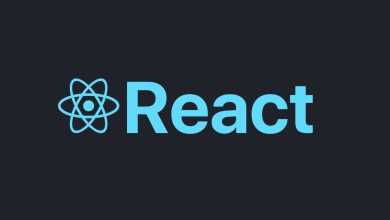Identifying the Best Web Development Frameworks for Your Business Needs

When it comes to choosing the web development frameworks for your business, you want to be sure that you make the right choices. After all, having the proper framework in place can make or break your business. It can mean the difference between success and failure.
With that in mind, you must carefully choose your frameworks. However, choosing the right web development frameworks can be challenging, especially when you don’t know what to look for.
Do you know the top frameworks for web & software projects?
The infographic below offers insights into the list of top frameworks used worldwide.

Source: Statista – Top Web Development Frameworks
It seems the list is quite long. So, how to choose the best among the top most used frameworks?
Don’t worry!
This guide to identifying the best web development framework for your business needs will make that job much more manageable. It will help you make a commendable decision based on your company’s specific needs.
Here are The Top 9 Features to Look at While Choosing a Framework for your Enterprise
1. Usage of the Framework
The first thing you need to analyze or learn is what your business needs.
- What is your business going to do with it?
- How are you going to build your website or web application?
- What kind of platform will be used?
These questions will help you determine which framework best suits your business. For example, if you build a cross-platform mobile app, React Native would be good.
2. Software Pattern Whether MVC/MVP

Source: Pinterest
The second thing is to know what kind of software pattern your business will use. For example, if you are going with a Model View Presenter (MVP) pattern, Angular 2 would be a good choice.
On the other hand, if you are going with an MVC (Model View Controller) pattern, then Angular 1 would be a good choice. The key here is to choose a framework that matches your business requirements and fits your desired software pattern.
3. License Ensuring Effective Rights
Several frameworks are available in open source, but you can choose from several paid frameworks if you want something more private. It all depends on your business requirements and budget.
For example, React Native is an open-source framework that supports Apache 2.0 license, while Ionic is a closed-source framework that supports the MIT license. A commercial license ensures that you have full ownership over your app or website.
4. Hosting Requirements
It all depends on your business requirements and budget. Some frameworks require you to host them on their servers, while others are easy enough that you can host them on your servers. For example, React Native requires a server with Node JS and MongoDB installed, while Ionic does not require any server.
If you have limited resources/budget, Ionic would be a better choice as it does not require any additional hardware or software setup.
5. Learning Curve Allowing Ease of Use

The next thing you need to analyze or research is how much effort it will take your team to learn and use a framework. Some frameworks are easy enough that even a non-developer can use them, while others are so complex that they require extensive training.
It all depends on your business requirements and budget. For example, React Native is relatively easy and quick to learn, while Ionic requires more effort as it uses Angular JS as its base framework.
6. Availability of a Core Library
A critical thing is if a framework comes with its core library. It is necessary because not all frameworks have a well-developed library that can support your business requirements.
The good news is that the top frameworks come with their core library. Core Library also ensures you enjoy good speed or lower overhead for memory and CPU.
7. Good Documentation Facilitating Quicker Development

You need to know whether the framework has good documentation. It is essential because good documentation makes it easier for your team to learn and use a framework.
For example, React Native, Angular, React, etc., do have excellent documentation and facilitate usage in the project. So, if you want something easy enough that even non-developers can use, these frameworks would be a better choice.
8. Whether it Receives Frequent Updates
You need to know whether a framework gets frequent updates. It is essential because a good update improves and fixes bugs and adds new features. It is necessary to want your website or web application to be user-friendly.
For example, React Native does get frequent updates from its parent company Facebook. Similarly, Angular, React, etc., receive regular updates. So, if you want something that has systematic improvements and additions, then they are proven excellent choices.
9. Ease of Installation
The chosen framework should be easier to install and extend. A single-click installation process is preferable. For example, Angular supports one-click installation through the Expo app store, while most other frameworks lack such facilities. So, if you want something convenient to install and use, then Angular would be a commendable choice.
That was all about the top features while choosing reliable web development frameworks. Let’s explore the list of top 5 along with their pros and cons to understand the market scenario.
Top 5 Web Development Frameworks Used Worldwide
#1 – React

Founded by Facebook, React.js has taken hold of web development. It is a Javascript-based framework that mainly works on two principles: Virtual DOM and one-way data flow. This framework was released in 2013, and Facebook used it in its news feed, making it even more popular among developers worldwide.
Nowadays, many other companies are using React.js to build their apps, such as Walmart, AirBnB, Imgur, and Zillow, to name a few. React.js provides a reusable view for web apps that allows you to create large applications with ease.
The main benefit of React over other frameworks is its virtual DOM (Document Object Model). It makes it much easier to render views quickly without dealing with unnecessary updates or re-renders when data changes are made. Thus hiring web developers who are pros in React ensures rapid project development cycles saving time and cost.
Pros of Using React
- Virtual DOM
- Reusable components
- Community support
- SEO-Friendliness
- Easier to learn
Cons of Using React
- Poor documentation
- The view covers only the UI layer.
#2 – jQuery
Despite all modern frameworks, jQuery remains one of the most important libraries in web development. It is used primarily to add additional functionality and enhancements to HTML pages. jQuery was initially released in 2006 and has since been acquired by Oracle.
This library has become a commendable tool for most developers today and will likely remain for years to come. The significant benefits of using jQuery include its compatibility with virtually every browser, its ability to make Ajax requests without needing a refresh of a page, and its wide range of plugins that developers can add on top of any website.
Pros of Using jQuery
- Cross-browser compatibility
- Clean and beautiful syntax
- Lightweight and lean
- Open-Source
- Simple learning curve
Cons of Using jQuery
- Obsolete DOM APIs
- Huge library to import.
#3 – Express
Express is a worldwide renowned web framework for Node.js. This framework makes it easy to build web applications using Node.js. You can use ES6, CSS, and HTML with Node. Still, many developers prefer to use CoffeeScript or TypeScript instead of standard JavaScript because they believe these languages make programming more straightforward and fun to write.
NPM is used to manage dependencies which allows you to focus on your application code rather than worrying about how various libraries work together. Express supports two-way data binding, RESTful routes, and middleware-based routing – all core aspects of modern web development frameworks today. The Express documentation explains how the framework works and shows you how to use it in your projects.
Pros of Using
- Scales application quickly
- Simple to learn
- Same language to code Frontend
- Less developer cost
- Great performance
Cons of Using
- Callback issues
- Client-request problems occur with the middleware system.
#4 – Angular
Angular is a practical front-end web application framework mainly maintained by Google and a community of individuals and corporations to address many challenges in developing single-page applications. Angular follows the Model–view–controller (MVC) architectural pattern. The default UI technology used by Angular is HTML, augmented with CSS for styling and JavaScript for dynamic behavior.
However, it also supports optional tooling to generate content dynamically using TypeScript or Dart. A command-line interface (CLI) allows developers to create and manage projects, configure work environments, and build applications from scratch using only NPM packages aligned with global best practices. In 2015 Minko Gechev created the Angular2-seed project.
Pros of Using Angular
- Maintained by Google
- High job demand
- Two-way data binding
- A faster document object model
- High community support
Cons of Using Angular
- Steep learning curve
- Slow performance
#5 – Vue.js
Vue.js is a renowned progressive framework for building user interfaces. It’s similar to React because it allows you to create reusable components, but it’s different in that Vue provides some tools and abstractions on top of React concepts. Using these tools makes you more productive as you can combine components and get started with your app faster.
When working with Vue, your view layer becomes easy to maintain because instead of having a large JavaScript file full of code, you have one main component that renders other sub-components based on props passed down from your data layer (e.g., Vuex). These extra pieces are not required for essential apps but are very helpful when you start building more complex ones.
Pros of Using Vue.js
- High flexibility
- Improved performance
- Easy integration
- High speed
- Lightweight framework
Cons of Using Vue.js
- Lack of scalability
- Lack of plugins
Final Words
The constantly changing landscape of web development frameworks, tools, and technologies makes it hard to keep track of what’s out there, let alone decide which one is best for your business.
This guide has identified some of today’s most popular options and suggested frameworks that could be right for you based on your specific project requirements.
But don’t worry about having to start from scratch. Even when you choose not to implement any of these suggestions, at least now you know what factors to look at when selecting a framework to find something that works.
Alternatively, you can also connect with a web development company to ensure rapid project development using the right set of frameworks.
Read More in this Blog – https://www.dorjblog.com/web-development-company-offers-comprehensive-web-services/





